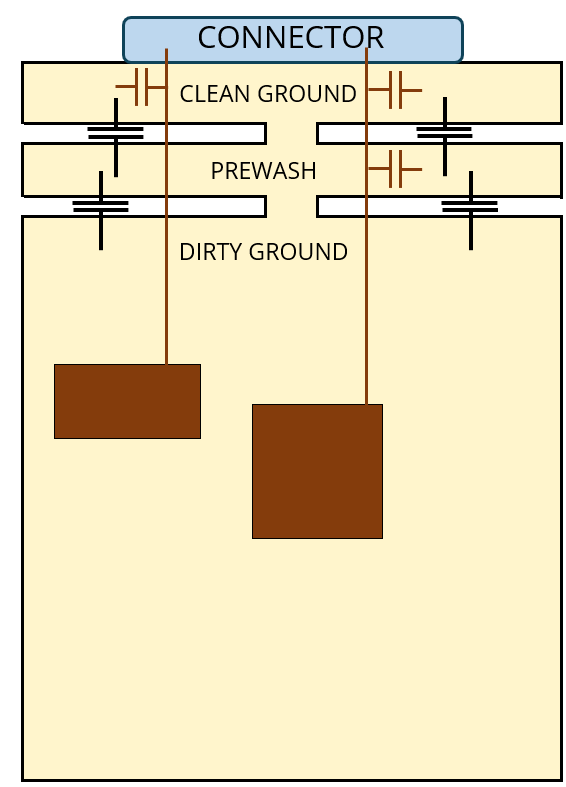EMC Question of the Day: April 1, 2022

Circuit board conductors labeled "ground" should generally be categorized as either
- safety, reference or current-return
- analog or digital
- board or chassis
- clean or dirty
Answer
The best answer is “d.” Dirty grounds can be a significant source of EMC and signal integrity problems. Nets referenced to a dirty ground carry noise that can show up in both conducted and radiated emissions measurements. Dirty grounds can also reduce the noise margin of sensitive inputs making them more susceptible to interference.
Many older textbooks and EMC application notes advocate maintaining a "clean" ground that is isolated from any dirty grounds. In this way, conductors carrying power or signals that leave the board can be cleansed by filtering them to the clean ground. Signals that originate in really noisy circuits can be filtered twice; first to an intermediate ground (referred to as a pre-wash), then to clean ground just as they leave the board.
The secret to a good dirty/clean board design is to obtain really good isolation between the dirty ground and the clean ground. A gap in the plane provides the best isolation. Of course, a connection must be made somewhere to allow the DC power currents to pass. Also, it's important to tie the two grounds together with multiple capacitors to allow high-frequency signal-return currents. In this way, excellent isolation is achieved while allowing low-frequency and high-frequency currents to pass freely.
Of course, when it comes to circuit board design, everybody knows that the old ways are usually the best ways. Nevertheless, you rarely see references to clean and dirty grounds in the EMC literature anymore. Perhaps one reason for this is that today's circuit boards are built and populated using hygienic, eco-friendly manufacturing techniques. Another reason may be that many products no longer have earth grounds. (Earth grounds are particularly dirty, because they are literally connected to dirt.)
If you really want to make an impression with your next circuit board layout, give it isolated clean and dirty grounds. While you're at it, isolate your digital and analog grounds, give each power source its own ground, and don't connect anything to chassis ground. Be sure to use the slowest logic family suitable for the application, adhere to the 20-H rule, and put ferrites on everything. It's only by following the advice in texts and app notes from the 1990s that we can hope to achieve levels of performance reminiscent of the previous millennium.
HAPPY APRIL FOOLS' DAY!
Have a comment or question regarding this solution? We'd like to hear from you. Email us at
